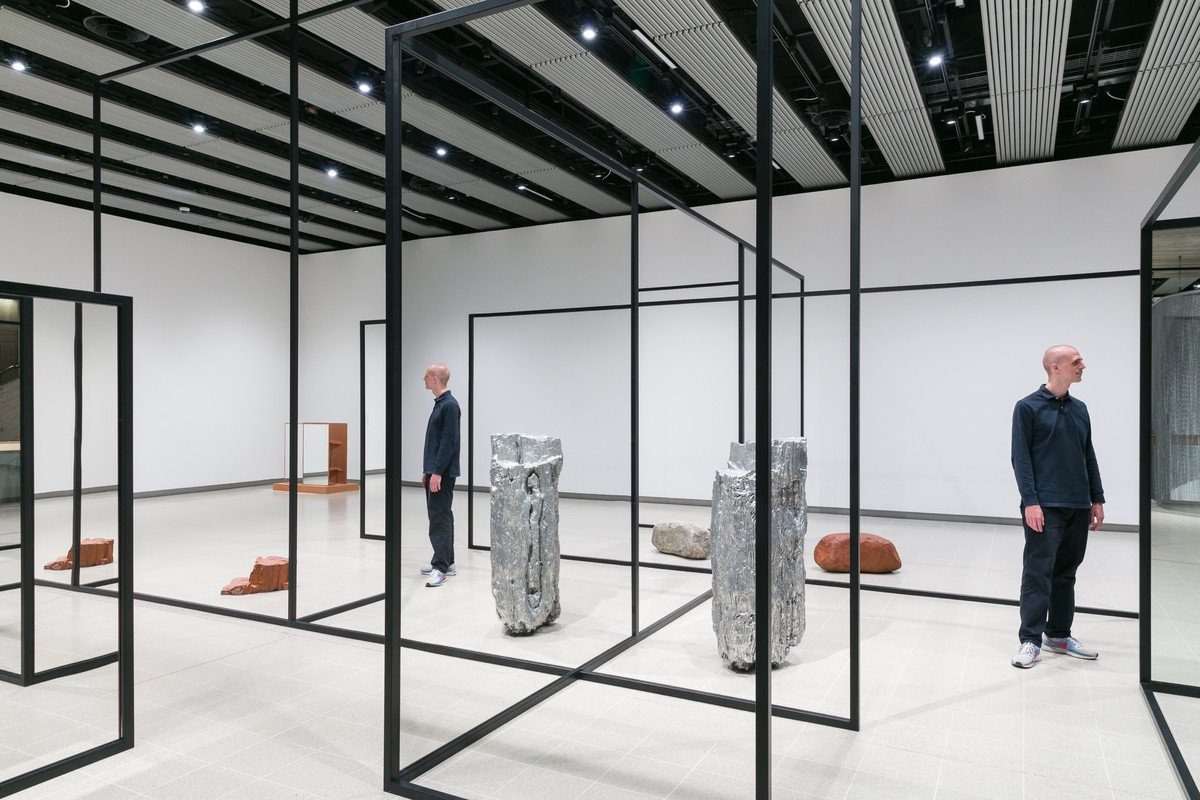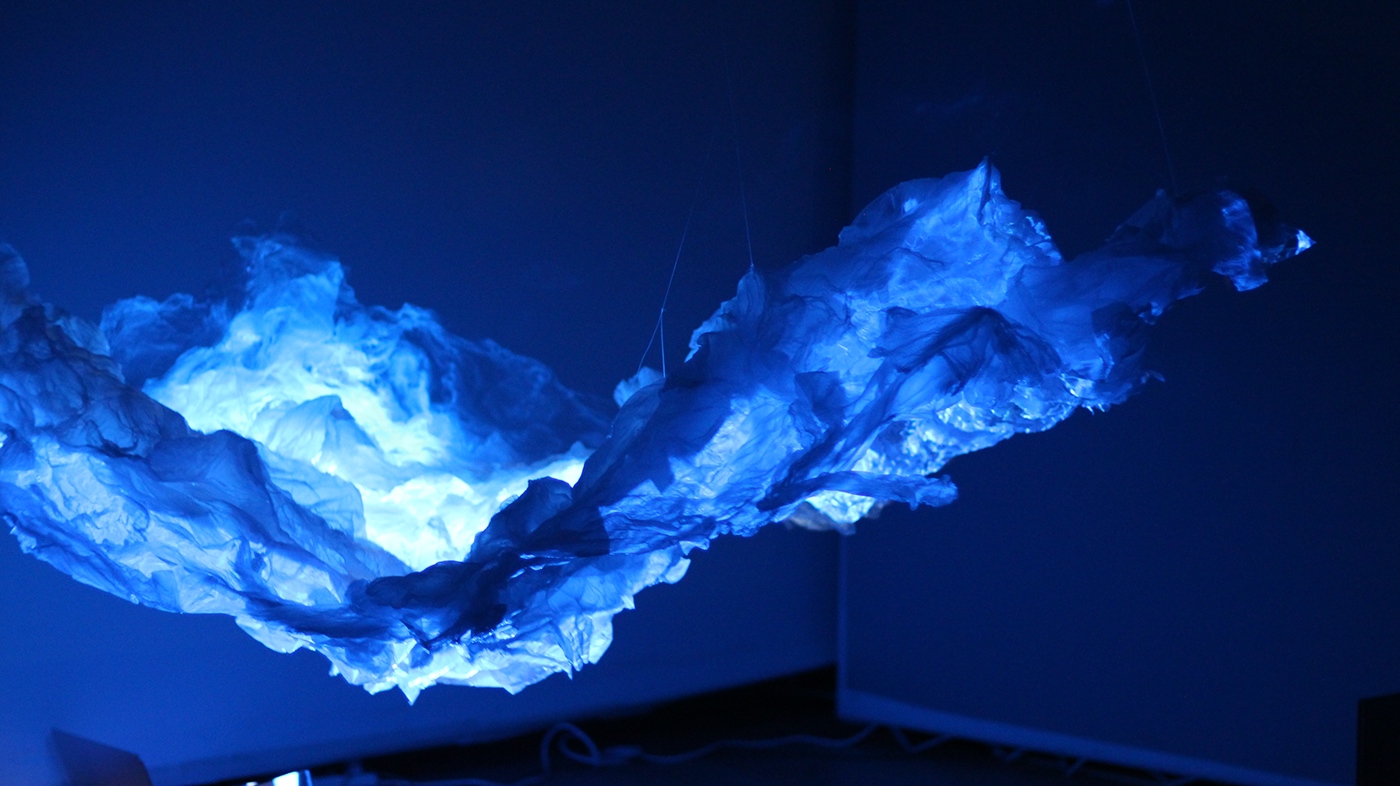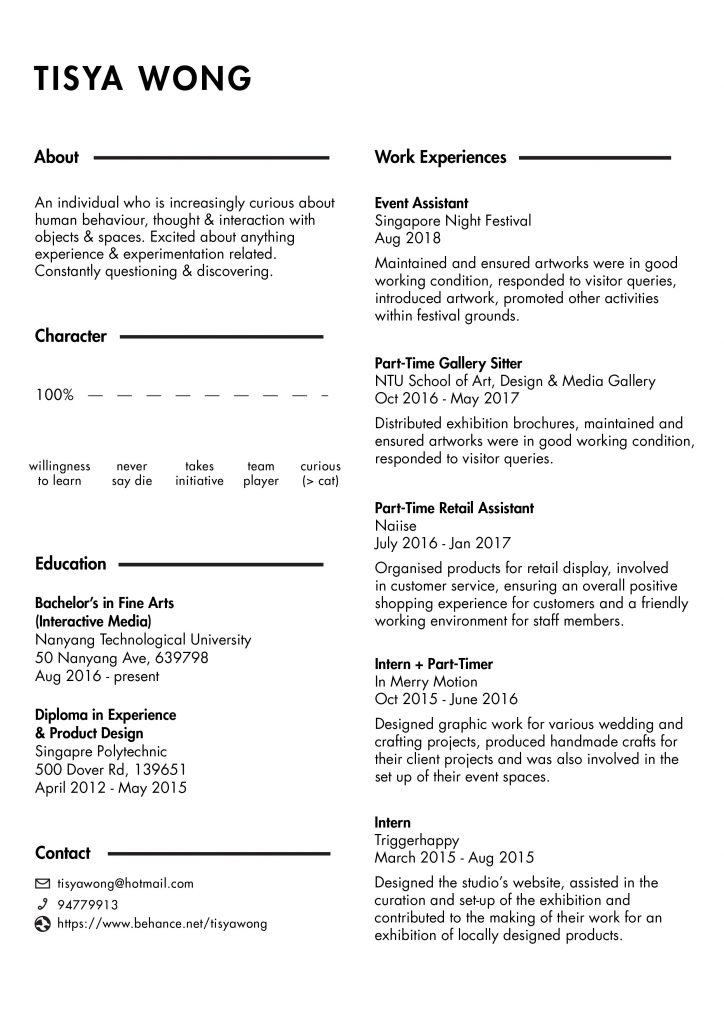Minimalism Exhibition @ National Gallery –

Milkstone (1980) by Wolfgang Laib on display at the National Gallery of Singapore.
At first glance, Milkstone looks like a typical square tile placed on the floor. One might even wonder, “Why is this here? How is this art?“. However, if one were to take the time to read its description or even just to observe closely instead of dismissing it as a sculptural piece, one would definitely do a second take. This is the reaction of disbelief; the realisation of being fooled by its calm reflective surface. What appears to be the surface of a typical white marble slab, is actually revealed to be a layer of milk.
Beyond its surface (pun intended), the work is not just a conversation between the viewer and the artist. Due to the use of perishable material, the maintenance required to ensure it sustains for the duration of the exhibition also involves the participation of the curators themselves.
Silke Schmickl, our museum guide & exhibition curator of the Minimalism exhibition at the National Gallery of Singapore, shared that the team of curators had to take shifts to replace the milk every morning before the opening of the gallery. This involves a very ritualistic and delicate process of repeatedly soaking the existing milk from the surface with a sponge and wringing it, before replenishing it with a new layer of milk (an Australian brand, to be exact).
This is the work of Wolfgang Laib, an artist and sculptor whose work is inspired by Eastern beliefs as well as his experiences in Germany and India. He works with organic materials such as milk, rice and pollen to produce his pieces, which he selects based on their purity and symbolism. Although not a part of the Minimalist movement of the 60s, Laib’s use of ephemerality places him as one of the contemporary forerunners of minimalism in the forms, materials and approaches in his work.
In an interview by the Journal of Contemporary Art in 1986, Laib shares the core inspiration and influence behind his work:

Milkstone (1980)
In an excerpt from an interview with the Sculpture Magazine in May 2001, Laib describes the meaning behind the ritualistic acts of Milkstone:
“Those stones were my first works after I had studied medicine for six years, and somehow they contain so much that is the opposite of what daily life is today…..(Art is to get you) not only to slow down but first to think about what you want for your own life, and also what you may want to change.”
Beth Skirkanich, an exhibits specialist at the Smithsonian’s Hirshhorn Museum and Sculpture Garden shared her experience on maintaining the exhibit in a behind-the-scenes report on the exhibition by Smithsonian Magazine:
“If you spill, you know you’re probably not concentrating enough,” Skirkanich told me. “The artist trained several of us to do this, and we’ve talked about it a lot, about how it slows you down. It’s kind of a meditative thing to come in to do every morning.”
The work, either through viewing or participating, encourages one to contemplate and reflect, it almost becomes a ritual in its essence. This video by Museum of Modern Art shows the process behind the making of Labi’s Milkstone pieces by Laib himself:
He starts off by taking a bowl of water from the river and sanding the top of the marble block such that there is a slight indentation on the surface to hold the milk. He then runs his fingers over to spread the milk across the surface, ensuring that every corner of the marble slab is covered just enough so that it does not spill over the edge.
This tedious process of replacing the milk to prevent it from spoiling, is an act that encourages contemplation and reflection. I infer it not only as a ritual, but as a daily reminder to remove the “bad” things in life and replace it with the “new”. It is a process that is necessary in how we maintain our well-being. The process of doing this would require a lot of dedication on our part, but will definitely prove to be a fulfilling one.
References:
Chiquit Brammall. Minimalist Art Exhibition Debuts in Southeast Asia. Houzz. 15th November 2018. https://www.houzz.com.sg/magazine/minimalist-art-exhibition-debuts-in-southeast-asia-stsetivw-vs~115472256
Klaus Ottmann. Wolfgang Laib. Journal of Contemporary Art. November 1986. http://www.jca-online.com/laib.html
Michael Kernan. Minding the “Milkstone”. Smithsonian. 2001. https://www.smithsonianmag.com/arts-culture/minding-the-milkstone-40363241/
Usha. Let’s Get Minimal. Plural Art Mag. 2018. https://pluralartmag.com/2018/11/15/lets-get-minimal/
Wolfgang Laib. Museum of Modern Art. 2013. https://www.moma.org/calendar/exhibitions/1315?locale=en


 Lampshade by Snøhetta
Lampshade by Snøhetta





 / I N S P I R A T I O N
/ I N S P I R A T I O N